On 12 June 1804, while heading up the Missouri River southwest of present-day Dalton, Missouri, the expedition met a contingent of boats led by fur trader Pierre Dorion, Sr. He quickly agreed to join the Lewis and Clark Expedition, and one of the enlisted men—John Robinson, Ebenezer Tuttle, or Isaac White—was sent home with Dorion’s flotilla.
Dorion had previously lived with the Yankton Sioux for twenty years, and he proved to be a gifted interpreter and knowledgeable diplomat. The captains commissioned Dorion:
“to act with a flag & some Cloathes & Provisions & instructions to bring about a peace with the Scioux Mahars, Panies, Ponceries, Ottoes & Missouries— and to employ any trader to take Some of the Cheifs of each or as many of those nations as he Could Perticularly the Sceiouex.”
The expedition boats left Dorion with the Yanktons,[1]Some historians classify the decision to leave Dorion as a major mistake as it left the captains without a reliable interpreter when meeting with the Lakota Sioux. Stephanie Ambrose-Tubbs, The Lewis … Continue reading and he later took a delegation of Yankton chiefs to St. Louis. Returning from St. Louis with fellow diplomat and interpreter Joseph Gravelines, he met the home-bound Lewis and Clark Expedition. Any news from Dorion seemed to be overshadowed by Gravelines’ letter from Thomas Jefferson informing the Arikaras of the death of one of their chiefs visiting Washington City. Dorion would continue negotiating with various Indian nations and worked under Clark as an Indian subagent.[2]Moulton, Journals, 2:295n3.
Related Pages
June 12, 1804
Old Dorion signs on


Near present Dalton, Missouri, the expedition meets a contingent of boats led by fur trader Pierre Dorion, Sr. He agrees to join as an interpreter, and one expedition member is sent back to St. Louis.
August 15, 1804
Dragging for fish
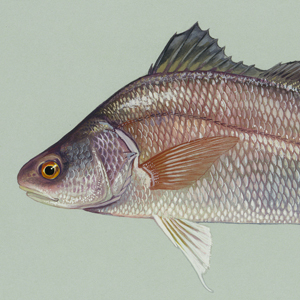

At Fish Camp near present Homer, Nebraska, Clark has a fishing net made to drag through a beaver pond, and they catch over 300 fish. When smoke appears, fur trader Pierre Dorion looks for Indians.
August 21, 1804
Big Sioux country
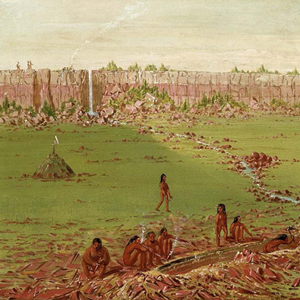

As the battle strong winds heading up the Missouri, trader Pierre Dorion informs the captains about the Big Sioux country including their red pipestone quarry. They camp near present Ponca, Nebraska.
August 27, 1804
Yankton Sioux visitors


Reaching present Yankton, South Dakota, they set a fire to signal the Sioux to a council. A Yankton man and two boys arrive. Drouillard fails to find Pvt. Shannon who hasn’t returned from a hunting trip.
August 29, 1804
Seventy Yanktons arrive
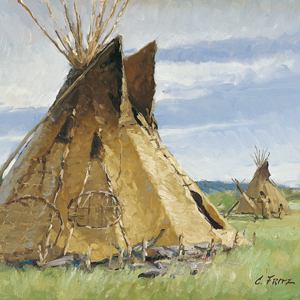

In present South Dakota, Sgt. Pryor and Old Dorion bring in a large delegation of Yankton Sioux. Clark writes about their “Conic” lodges and is presented a fat dog which he finds “good & well flavored”.
August 31, 1804
Yankton speeches
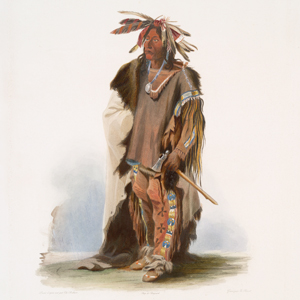

The council with the Yankton Sioux continues with many of them giving speeches while Clark and Sgt. Ordway take notes. Trader Pierre Dorion is assigned a mission to make peace with the region’s Nations.
September 26, 1804
Teton Sioux ceremony
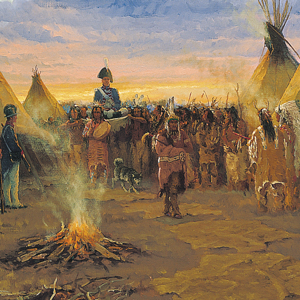

Pierre, SD Clark and Lewis are ceremoniously carried into a Lakota Sioux village where they are feted with food and music. Clark sees several recently-captured Omaha prisoners and asks for their return.
October 8, 1805
A canoe accident


Potlatch River, ID (Colters Creek) The Clearwater River has many rapids, stretches of calm, and islands inhabited by Nez Perce fishers. Travel stops after a canoe accident. In St. Louis, General Wilkinson tells of sick Indian delegates and the value of interpreter Pierre Dorion.
September 12, 1806
Old acquaintances


St. Joseph, MO The captains meet four old acquaintances, an old military companion and three men from the 1804 upriver trip.Joseph Gravelines and Pierre Dorion are acting under orders from President Thomas Jefferson, which the captains review and modify.
Notes
| ↑1 | Some historians classify the decision to leave Dorion as a major mistake as it left the captains without a reliable interpreter when meeting with the Lakota Sioux. Stephanie Ambrose-Tubbs, The Lewis and Clark Companion: An Encyclopedic Guide to the Voyage of Discovery (New York: Henry Hold and Company, 2003), 95–6. |
|---|---|
| ↑2 | Moulton, Journals, 2:295n3. |
